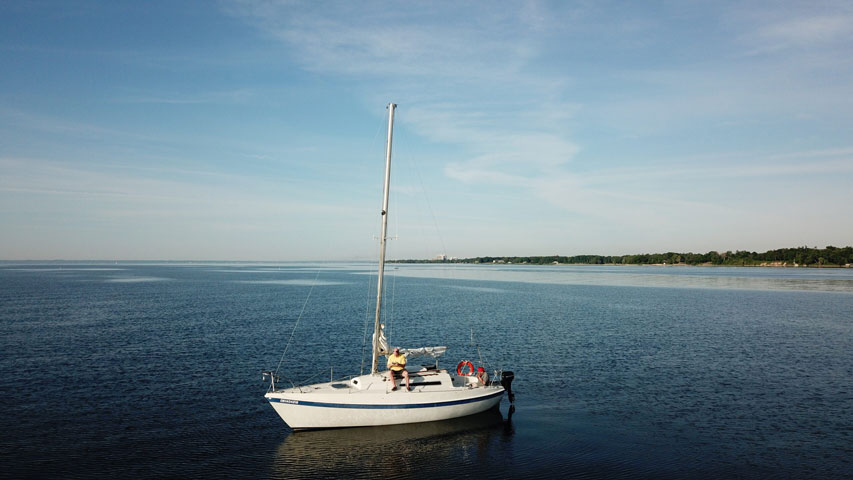Purchasing a new Mainsail for your sailboat is one of those investments that every sailor will be faced with eventually. Sails don’t last for ever, even if you treat them like gold. Once you have decided to invest in new sails you may get that feeling of being over whelmed by the choices and the details involved. When deciding on a loft to work with make sure you choose a loft that will offer a good consultation on the cloth and sail feature choices as well as a design consultation if you want one. Don’t be scared into paying extra for a sail just because your local loft tells you it’s hard to measure. You do not need the added expense of having someone come to your boat and measure for your new sail. If you can read a tape measure you can measure your boat for a new Mainsail.
Measurements Required for a New Mainsail:
- Rig Specs : The first thing that you are going to want to find are the General Rig Specs I,P,J,E for your boat. You can get these from your boat manufacturer, online or in your boat manual. These will be used to ensure that the loft you are working with has quoted you the correct size of sail and to ensure that when you take your measurements they are accurate.
- Existing Mainsail: Measure your existing mainsails general dimensions. Luff (leading edge of your sail), Leech (trailing edge of your sail) and the Foot of your sail. These measurements will be used to compare the measurements that you take from your rig to ensure that everything is working out well. It will also give your designer an idea of what the current sail size is.
- Rig Measurements: Now we are going to get onto the boat and start to take the measurements of the rig as it sits today. This will ensure that your sail designer is designing a sail for your boat and not the boat that it started as. The two measurements that are required are the P measurement and the E Measurement. The P is the maximum luff length that the sail can have. This is taken by hauling a tape measure up your mainsail halyard until it reaches the top and measuring straight down to the top of your boom. The E measurement is done the same way but from the aft of the mast to the longest out haul setting. While you are doing the E measurement also measure to your back stay. This will help your designer determine the size of roach that the sail can have without hitting your back stay.
Max Luff Measurement – How To Video
Max Foot Measurement – How To Video
Back Stay Measurement- How To Video
Now we need to take some more detailed measurements to ensure that your sail fits perfectly when it arrives. The areas that need to be looked at are the Out haul, the tack and the luff attachments.
Out Haul Attachments
There are two types of out haul attachments. Shackle Style and Car Style
Tack Connections
Your designer will want to know where to put the tack ring on the sail so that it lines up with your rig.
To measure the location of the tack attachment point simply measure back from the mast to bearing point of your tack fitting and measure up from the boom to your tack bearing point.
Reef Hook Location
Just like the tack set up and set back you will want to make sure the designer can align you reef rings to your reef hooks. Measure these in the same manner.
How to Measure Reef Hook Video
Luff Attachment – Sliders
Attaching your sail to your mast is simple when you choose the right slider. There are several types of sliders to use depending on the type of track you have on your mast. Measuring them is a straightforward and simple process, look inside your measurement form for more details, but the simple explanation is we need the width and waist of your selected slider.
How To Measure Luff Sliders Video
Clew Attachment – Slug
Now you will need to do the same process for your clew attachment (only if you have a shackle attachment)
How To Measure Clew Slug Video
The last things that a sail designer is going to wan to know is the mast rake and bend. If you choose the proper designer they will be able to pull this information off a picture that you supply or you can measure the rake by using a plumb bob to determine the bend.

That’s it! The details are important to get a sail that fits perfectly the first time, however they are easy to do if your sail loft provides a good measurement form to fill out.
To watch all of Precision Sails’ How To Measure a Mainsail Videos please click here.
If you are interested in receiving a quote from Precision Sails for your sail boat click here







